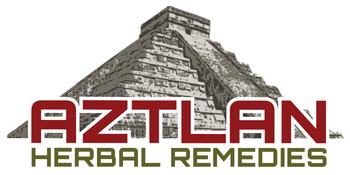For centuries, Cancerina (Hippocratea excelsa) has been one of Mexico’s most respected healing plants — valued for its powerful ability to support skin health, stomach wellness, and internal cleansing.
Deeply rooted in Indigenous and rural Mexican traditions, Cancerina continues to bridge ancient wisdom and modern herbal therapy.
What Is Cancerina (Hippocratea excelsa)?
Cancerina is a woody climbing vine native to Mexico and parts of Central America. Its bark and roots contain strong antimicrobial, anti-inflammatory, and astringent compounds that make it a cornerstone in traditional herbal medicine.
In folk practices, it’s often prepared as a tea, tincture, or topical wash to cleanse the body from within and accelerate healing of external wounds or rashes.
Traditional Uses of Cancerina
1. Skin Health & Wound Healing
One of Cancerina’s best-known applications is for skin care and wound treatment. Healers use it in washes or compresses for:
-
Acne and skin eruptions
-
Minor cuts, burns, and infections
-
Inflammation and skin irritation
Its natural astringent and antibacterial properties help tighten tissue, cleanse pores, and promote skin regeneration.
2. Digestive & Liver Support
Internally, Cancerina tea is used to detoxify the digestive system and support liver function. It’s thought to help flush out impurities, stimulate bile flow, and ease symptoms of indigestion.
-
Supports healthy liver metabolism
-
Promotes gentle internal cleansing
-
Used in “limpias” (spiritual cleanses) for internal renewal
3. Female Reproductive Wellness
In some regions, Cancerina is used by midwives and traditional healers for menstrual irregularities or uterine inflammation. It’s typically taken in small, measured doses as part of herbal combinations with ruda or manzanilla, under guidance from experienced practitioners.
How to Prepare Cancerina
Cancerina Tea (Decoction):
-
Add 1 teaspoon of dried Cancerina bark to 2 cups of water.
-
Bring to a gentle boil and simmer for 10–15 minutes.
-
Strain and allow to cool slightly.
-
Drink ½ cup twice daily for up to 7 days, then pause.
Topical Use:
-
Boil 2 tablespoons of Cancerina bark in 2 cups of water for 15 minutes.
-
Let cool and use as a wash or compress for skin irritations, rashes, or blemishes.
Scientific Insights
Preliminary studies have found that Hippocratea excelsa contains triterpenes and flavonoids that demonstrate anti-inflammatory and antimicrobial effects.
These findings support traditional uses but also highlight the need for caution and dosage control — its potency is part of its power.
Safety & Precautions
Cancerina is a strong medicinal herb and should be used with respect and moderation.
-
For external use, it’s generally safe when diluted.
-
For internal use, short-term, low-dose consumption only.
-
Not recommended during pregnancy or breastfeeding.
-
Always consult a qualified herbalist or health professional before extended use.
💡 Traditional healers often emphasize that Cancerina “cleanses deeply” — making rest, hydration, and balanced nutrition important during use.
Cultural Significance
In Indigenous Mexican communities, Cancerina is known as a “plant of purification.” It symbolizes inner cleansing and resilience — both physical and spiritual.
Used in temazcales (sweat lodges) or ritual baths, it’s believed to draw out negativity and renew vitality.
Today, Cancerina remains one of the most sought-after herbs at Mexican herbal shops for detoxification, skin balance, and natural wellness.
Key Takeaways
-
Cancerina (Hippocratea excelsa) supports skin health, digestion, and detoxification.
-
Used as tea or wash for cleansing and healing.
-
Must be used carefully and moderately due to its potency.
-
Deeply rooted in Mexican Indigenous healing traditions.
-
Represents purification, balance, and vitality in herbal medicine.










